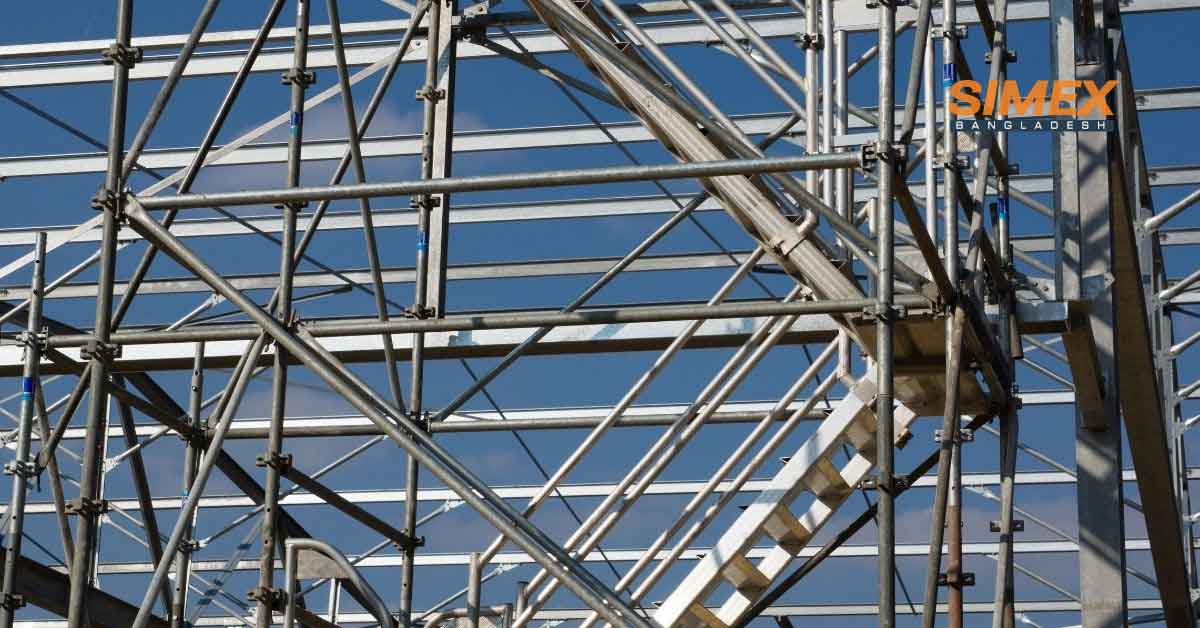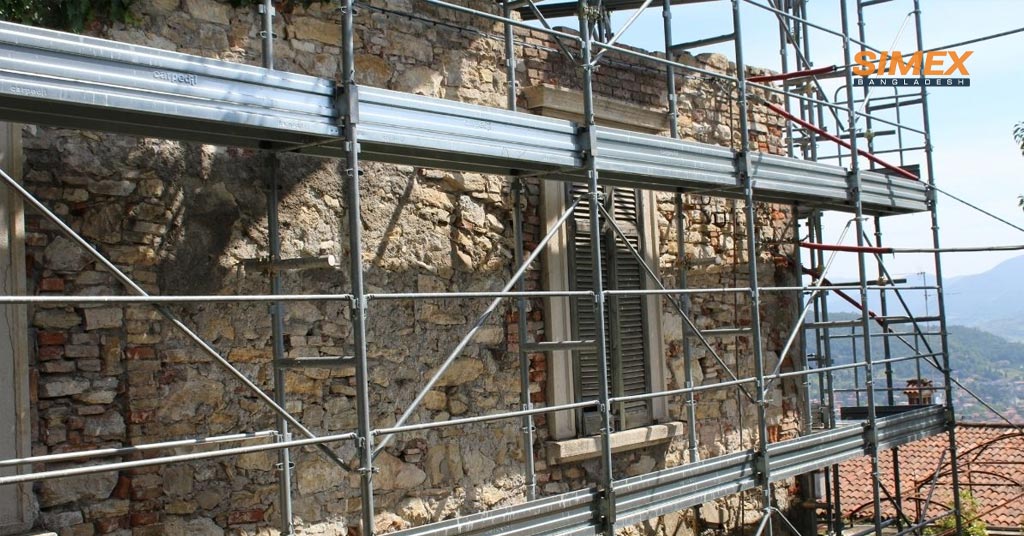
What Is Scaffolding In Construction Sites?
The term Scaffolding is identified with construction and education. In education, scaffolding implies breaking the total leaning into little lumps and adapts effectively using different tools, methods, and organized ways. With regards to this article, we are keen on investigating the term scaffolding concerning the construction industry. Let’s start with the definition of scaffolding.
Scaffolding: During construction, maintenance, or fixing work, to help the workgroup and materials, transitory designs are fabricated. These brief structured are called Scaffolding. Scaffolding helps in access at heights and broadly used in a wide range of construction works. This ephemeral structure works as a scaffolding to help the regular workers to play out its construction activities.
Scaffolding is generally used during construction and renovation activities. In its anything but scaffolding is any impermanent elevated or suspended work surface used to help workers and materials. There are many types of scaffoldings, both supported and suspended. Maximum of scaffolding supplier in Bangladesh are storages 20/30 importance scaffolding tools.
As scaffolding includes work at height, it is planned after safety guidelines to reduce hazards. Studies show that significant levels of mishaps in construction industries are straightforwardly or in a roundabout way identified with scaffolding. In this way, the scaffolding worker for hire and scaffolding workers ought to play out their responsibilities with the most extreme concern. Excellent and high-quality materials ought to be used for scaffolding design.
Scaffolding Parts or Components Used in Construction
There have many different types of scaffoldings. The major components of scaffolding in construction are as follows:
- Standards: Vertical tubes that transfer the weight load to the baseplates. To increase the height of scaffolding, standards are connected using pins and socket joints.
- Ledgers: Flat horizontal tubes that join between the standards. Ledgers connect multiple bays. Ledgers decide the height of the working scaffolding.
- Transom or Bearer: Transoms are used to support standards and they are at the right angles to the ledgers. Transoms define the bay width.
- Scaffolding Tubes: Steel or Aluminum tubes used in scaffolding.
- Couplers: Fittings to hold tubes together. They are of three types; Putlog Coupler, Swivel Couplers, and Right Angle Couplers.
- Diagonal Braces: Strengthen the basic structure to carry more loads.
- Boards: Steel, Aluminum, or wooden boards that provide the working area.
- Base Plates
- Guard Rails
- Putlogs: Putlogs are transverse members that are placed one end on ledgers and other ends right angles on the wall.
General Scaffolding Requirements Needed in Construction
- The balance of scaffolding should be sound and unbending, fit for supporting the weight. Scaffolding should not be put on temperamental articles, like blocks or bricks.
- Scaffolds should be raised, destroyed, or moved exclusively by appropriately prepared workers under the oversight of a skilled individual. A capable individual is one who is equipped for distinguishing existing and unsurprising dangers in the environmental factors or working conditions that are perilous to representatives, and who has the approval to take brief remedial measures to kill them. The skilled individual is the shop boss or her/his assigned agent.
- Scaffolds and its parts should have the option to help at any rate multiple times the intended load.
- Standard guardrails (e.g., handrail and midtrial) and toe sheets should be accommodated on all open sides of the scaffolding that are ten (10) feet or more over the encompassing surfaces.
- Cross bracing is not acceptable as an entire guardrail system but is acceptable for a top rail when the crossing point of the two braces is between 38 inches (0.9 meters) and 48 inches (1.3 meters) above the work scaffolding and for mid rails when between 20 inches (0.5 meters) and 30 inches (0.8 meters) above the work scaffolding. The end points of the cross bracing must be no more than 48 inches (1.3 meters) apart vertically.
- To protect against falling objects, screens must be installed between the toe board and mid rail if anyone is required to pass under the scaffolding.
- Any damaged or weakened component of a scaffold must be repaired or replaced immediately.
- All planking or scaffoldings must be overlapped a minimum of twelve (12) inches and secured from movement. Scaffold planks shall extend over their end support at least six (6) inches but no more than twelve (12) inches.
- The work area for each scaffold scaffolding and walkway must be at least 18 inches (46 centimeters) wide. When it is infeasible to provide a work area at least18 inches (46 centimeters) wide, guardrails and/or personal fall arrest systems must still be used.
- A ladder or other safe means of access must be given.
- Access must be provided when the scaffold scaffoldings are more than 2 feet (0.6 m) above or below a point of access. Direct access is acceptable when the scaffold is not more than 14 inches (36 centimeters) horizontally and not more than 24 inches (61 centimeters) vertically from the other surfaces. Cross braces shall not be used as a means of access.
- Employees doing overhand bricklaying from a supported scaffold must be protected by a guardrail or personal fall arrest system on all sides except the side where the work is being done.

Advantages of Scaffolding
As Scaffolding is known for making the construction-related tasks easier, you can be sure of its multiple advantages. The importance of scaffolding can not imagine.
- Easy Accessibility: One of the huge benefits of undertaking this interaction incorporates its availability. Thus, there are lesser types of disturbances and furthermore assists with making a protected working space. It is simpler to foster the interconnected design and guarantees full admittance to the whole area.
- Balances Perfectly: The scaffolding gives firm balance to the workers. It assists workers with adjusting themselves in various positions. It can likewise assist with explicit capacities and explicit errands.
- Safety: One of the main benefits of the scaffolding is the manner by which it can add to increasing productivity. It increases the proficiency of the workers and makes the interaction secure and safe. Since construction is a genuinely requesting task, this can assist with making a superior workspace.
- Assembling and Dismantling: The structure of collecting and destroying the scaffolds are simple and easy. Consequently, this saves a ton of time and makes the interaction quicker. It takes a minimal sum to be set up and brought down. Make a point to think about this as your essential choice for scaffolding.
- Long-Lasting: The most critical benefit of this interaction is the scaffolding is long-lasting and dependable. It’s anything but various crossing-over focuses, subsequently diminishing the distance the specialists need to cover. This recoveries both time and energy for your workers. Since it is durable, it also ensures the process to be safe and secure.
Scaffolding Hazards and Risks
Working in scaffolding is full of hazards and risks. Scaffolding hazard increases with an increment in height. Studies represent that over 65% of the construction labor force needs to deal with scaffolding. Different incidents confirm the high recurrence of scaffolding hazards. The significant platform risks are:
- Falls from scaffolding due to improper guardrail installation.
- The collapse of the scaffold due to improper erection.
- Falling Material from scaffolds makes the nearby region vulnerable to hazards.
- Electrical hazards due to improper planning.
- Slips and falls from planks
- Overloading scaffoldings.
- Rolling scaffolds.
That is the reason it is constantly proposed to examine the platform every prior day beginning the construction work. Numerous associations utilize a standard agenda to guarantee the scaffolding is reasonable for working before work starts.
